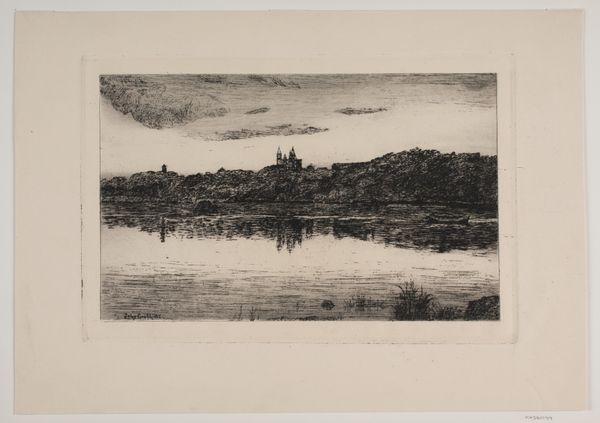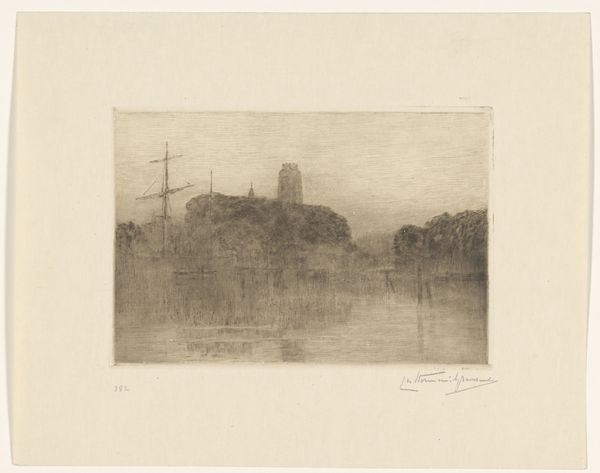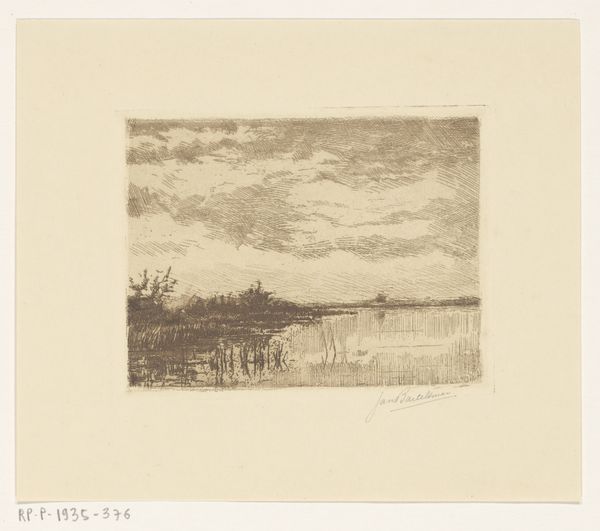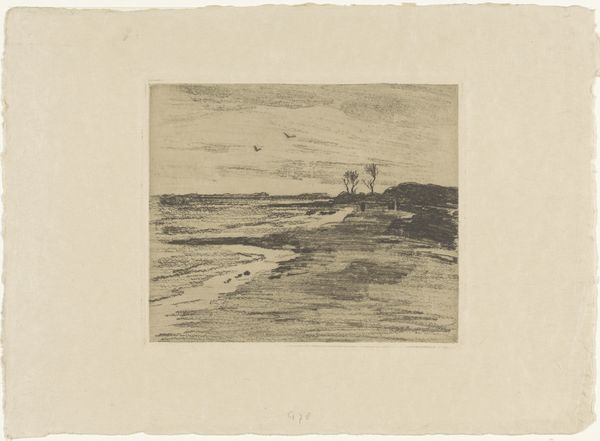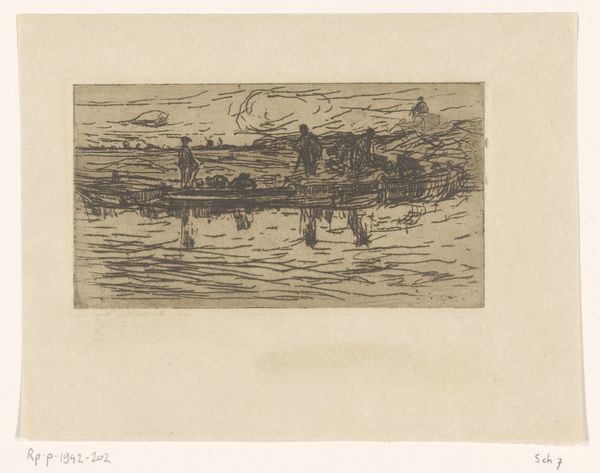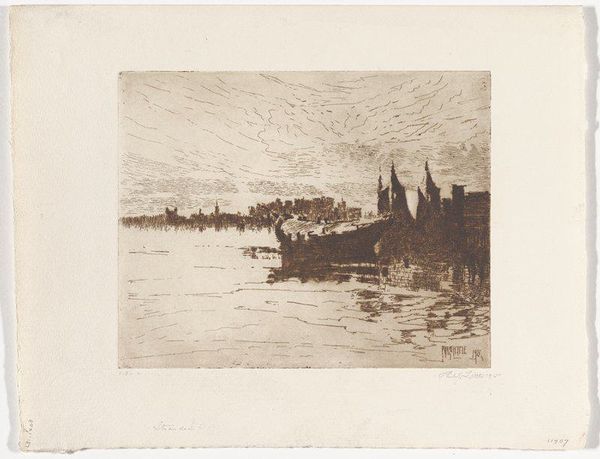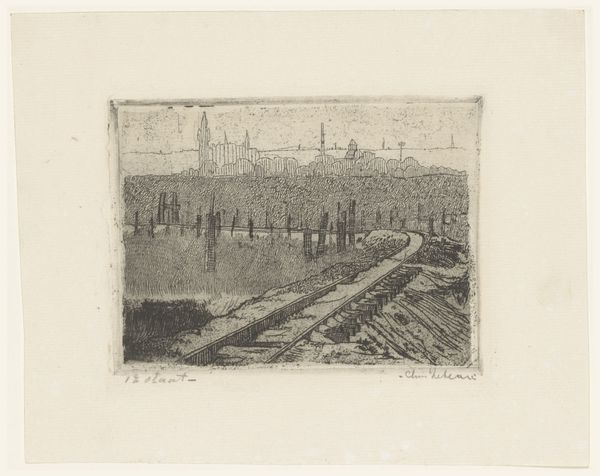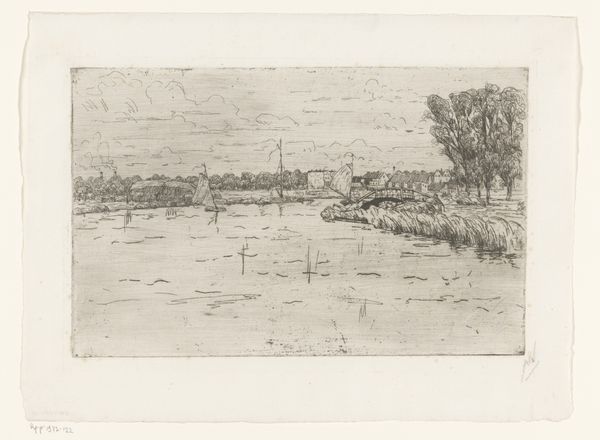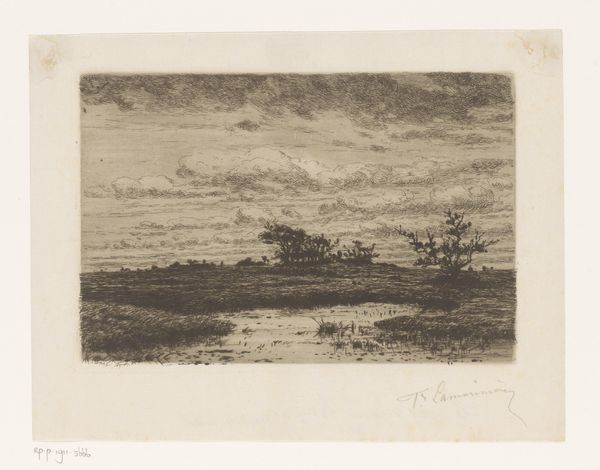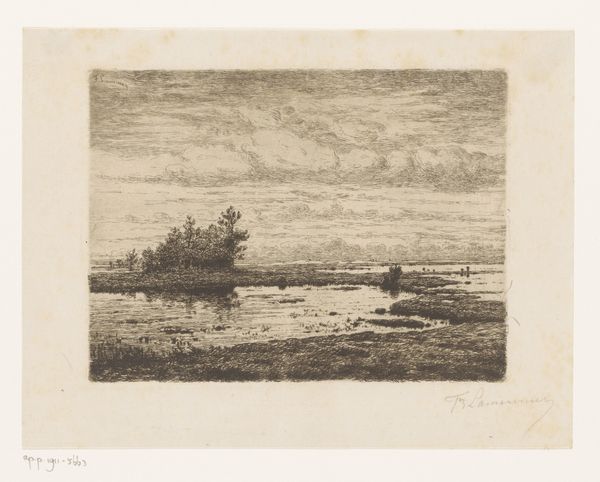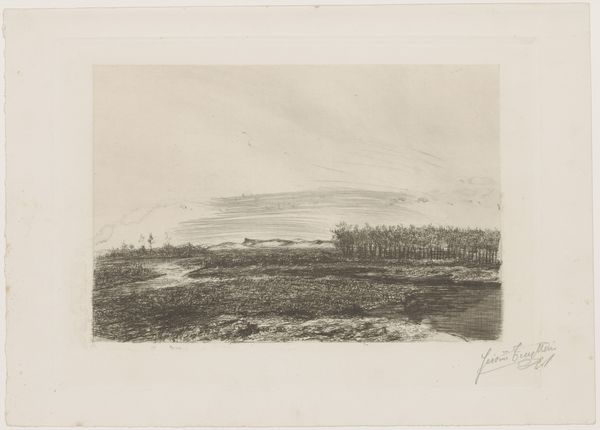
drawing, lithograph, print, paper
#
drawing
#
lithograph
# print
#
impressionism
#
landscape
#
river
#
paper
#
line
#
cityscape
#
tonal art
#
monochrome
Dimensions: height 108 mm, width 166 mm
Copyright: Rijks Museum: Open Domain
Editor: Here we have Anton L. Koster’s 1890 lithograph entitled “Gezicht op Maastricht”, or "View of Maastricht." It's a very moody landscape, mostly greyscale, with an almost oppressive sky over a city silhouette. What stands out to you? How do you interpret the feeling it evokes? Curator: It’s the somber quality that captures my attention as well. Consider the date, 1890. Europe was on the cusp of enormous social and political change. Looking at this print, I see not just a cityscape, but a visual metaphor for societal anxieties. Do you see how the monochrome palette and the stark lines contribute to this feeling? Editor: Yes, the lack of color definitely adds to the sense of foreboding. And you're right, there's a starkness to the lines, like the artist is outlining the edges of something about to disappear. Curator: Exactly! Think about Maastricht itself – a city with a complex history of sieges and power struggles. Koster, perhaps unconsciously, taps into that collective memory. The print becomes a commentary on the precarious nature of progress, a visual lament for what’s being lost in the name of modernity. Editor: So it’s not just a pretty picture; it’s a reflection on power, loss, and perhaps even resistance to the changes of the time. Curator: Precisely. Art always engages in a silent dialogue with the social context that births it. By understanding the anxieties of the period, we can appreciate Koster's work on a much deeper level. What do you make of the position of the water? Editor: The water feels heavy and still, mirroring the sky above. Perhaps it signifies a kind of stagnant feeling of being caught between the old and new eras? Thank you. Curator: That's an insightful observation. By thinking critically about art, hopefully more people will begin to see that a work of art is much more than just what is at the surface.
Comments
No comments
Be the first to comment and join the conversation on the ultimate creative platform.
